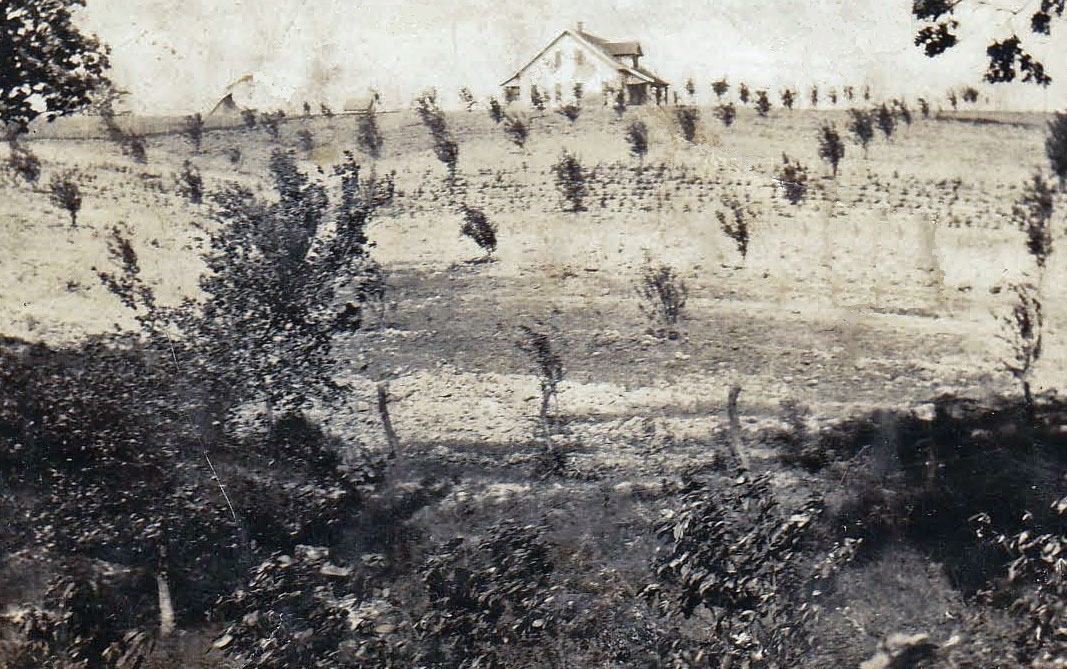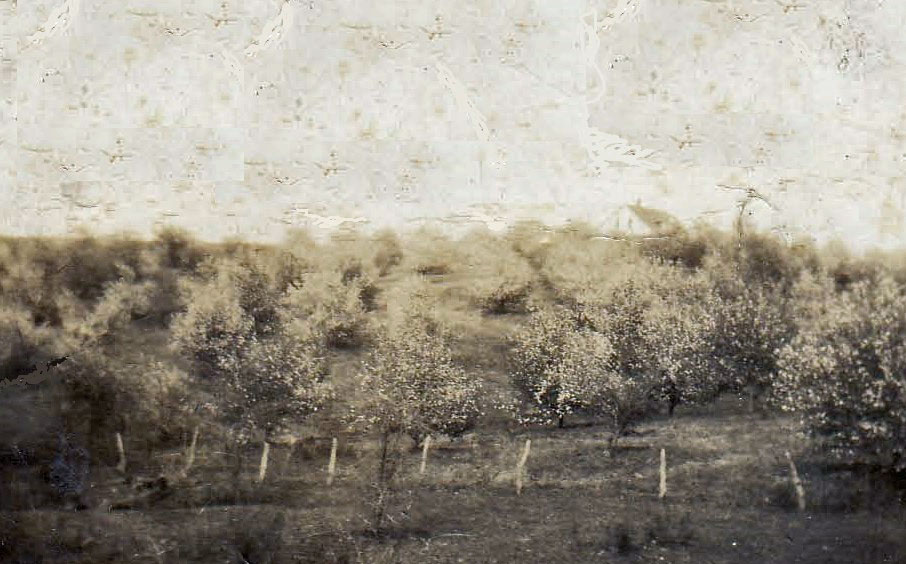|
Tiger lily
Snake-free
linden tree
Buck brush!
|
A great way to stay connected with one's ancestors, to remember and honor them, is to cultivate the same plants they did. As generations pass, these plants become family heirlooms, symbols of a lineage extending back through time.
The photo above is of tiger lilies in the garden of my cousin and agemate, Jacquie Clark (<Fritz). So far as anybody knows, these gorgeous perennials, native to North America, were growing across the front of the homeplace when Jacquie's and my grandparents, Wilhelm and Theresia, bought it in 1892, just after their migration to America. Growing up on the homeplace, Jacquie loved seeing the tiger lilies bloom each summer. No surprise that decades later, she asked the current owners of the homeplace, Anthony (<Raymond <Theodore, Sr.) and Pat Westhues, to let her dig up some tubers and transplant them to her and her husband Omer's home in St. Charles MO.
Jacquie is one of many Westhues cousins who have cultivated heirloom plants. Sally Papreck (<Rosemary <Henry) grew up in Jefferson City, not far from the home of her grandparents, Judge Henry and Helen. She remembers Judge warning her to be careful when she played under the huge linden tree beside his home because snakes lived high in the branches and one might drop down at any time. Knowing her grandfather, she guessed this was a tall tale but took no chances, treading lightly near that tree. Years later, living in Columbia and needing to plant a shade tree in her front yard, she remembered her grandparents and chose a linden. She never saw a snake fall out of it.
The purpose of this webpage is to list some of the main heirloom plants of the Westhues family in America: the trees, shrubs, perennials and annuals cultivated on the homeplace (later owned by youngest son Fritz) and at the homes of the other seven children who married (Theodore, W.G., Henry, Ben, Mary, John, and Anna).
In preface, let me say that I myself enjoy growing plants from the farm where I grew up, the farm of my parents, John and Olive, just east of the homeplace. About 1985, Anne and Jonathan and I drove from Ontario to Glasgow to spend Christmas with Mom. I asked Delbert Himmelberg (who owned the farm then, now the owners are Anthony and Pat's son Raymond and his wife Kim) if I could walk down into the woods and dig something up for transplanting bare-root back home in Canada. He said sure. It was fiercely cold. I had a devil of a time picking at the frozen earth to get a young specimen of what I was sure would be a gorgeous native shrub. Back home in Canada, I nursed it along, transplanted it to our garden in spring, and was delighted that it grew. It turned out to be buck brush, a prolific but ugly weed that Dad worked hard every year trying to get rid of. |
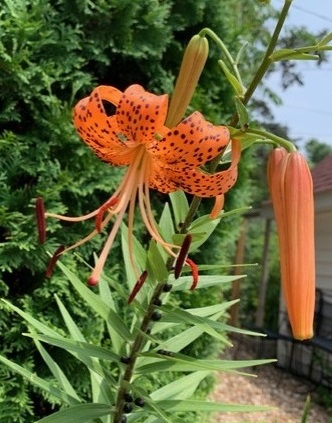
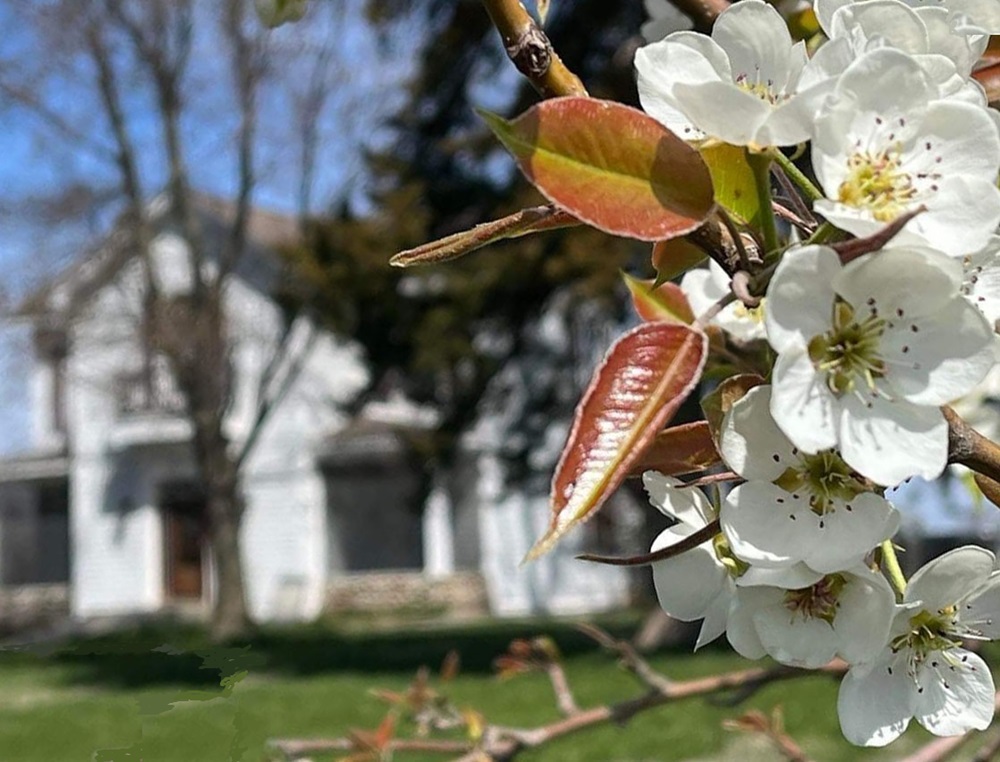

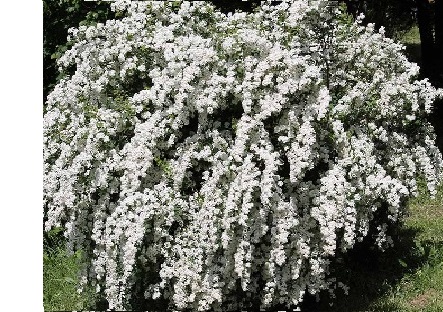 The Spiraea genus includes dozens of species. Among the most common today are Spirea japonica X bumalda. A hundred years ago, bridalwreath Spirea was hugely popular as a foundation planting. I remember these shrubs planted on the east side of my parents' farmhouse, and on the north side of Fritz and Eulalia's. I have a hunch these shrubs are heirlooms in all branches of the Westhues family. They could sometimes serve even a practical purpose. Jane Schmidt (<Henry) told a spirea story in her autobiography. She and her brother Jack, preteens at the time, were wrestling boisterously in the back seat of their father's car as he drove through Jefferson City. They accidentally kicked open the back door and almost caused a crash. When they got home, their father cut long, slender, supple branches from a bridalwreath spirea in front of the family's home on East High Street, and used these branches to give each child a whipping.
The Spiraea genus includes dozens of species. Among the most common today are Spirea japonica X bumalda. A hundred years ago, bridalwreath Spirea was hugely popular as a foundation planting. I remember these shrubs planted on the east side of my parents' farmhouse, and on the north side of Fritz and Eulalia's. I have a hunch these shrubs are heirlooms in all branches of the Westhues family. They could sometimes serve even a practical purpose. Jane Schmidt (<Henry) told a spirea story in her autobiography. She and her brother Jack, preteens at the time, were wrestling boisterously in the back seat of their father's car as he drove through Jefferson City. They accidentally kicked open the back door and almost caused a crash. When they got home, their father cut long, slender, supple branches from a bridalwreath spirea in front of the family's home on East High Street, and used these branches to give each child a whipping.  Hemp is on the current list not because our ancestors cultivated it but because it was already growing wild in the part of America where our ancestors chose to settle. The same is true of pecan trees. The map at right, adapted from
Hemp is on the current list not because our ancestors cultivated it but because it was already growing wild in the part of America where our ancestors chose to settle. The same is true of pecan trees. The map at right, adapted from 